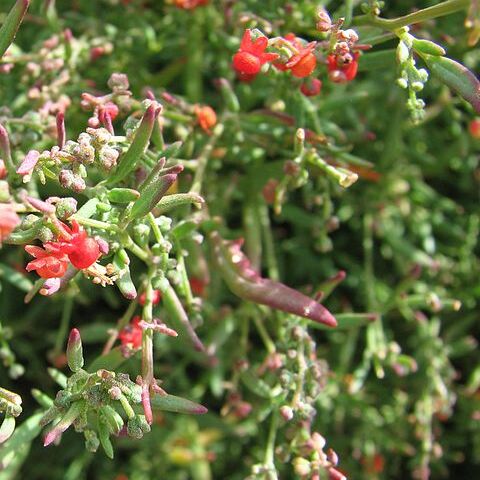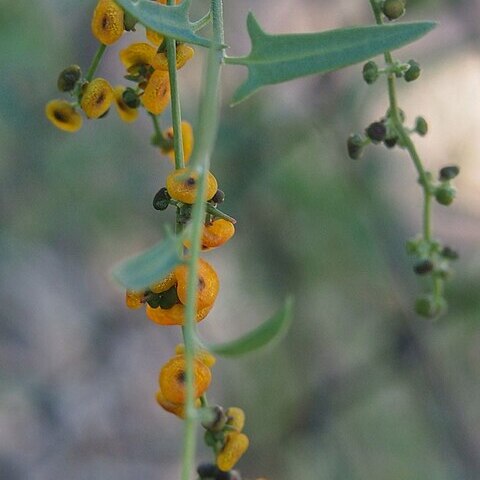Scrambling perennial with woody base. Leaves opposite or alternate; lamina linear to broadly triangular, entire, rounded to truncate or hastate at base, usually 10–20 mm long, moderately mealy when young, abruptly petiolate. Inflorescence a narrow panicle 2–4 cm long. Perianth depressed-globular, 0.7–1.5 cm diam., mealy to glabrescent; tepals oblong, enlarging and becoming red and fleshy in fruit. Stamens 0–2, rarely 3. Pericarp succulent, c. 4 mm diam. Seed 1–1.5 mm diam.; testa rugulose to areolate-reticulate, black.
A scrambling plant. It creeps over the ground. It keeps growing from year to year. The branches are tangled and weak. The stems are very slender. They are 30-60 cm long. The plant can be 0.5-1.5 m high and 1-2 m wide. The leaves are often arrowhead shaped. They have an angular base. They can be green or yellow. The flower spikes are at the ends of branches and in the axils of leaves. The flowers are very small and green. They become red. The fruit are orange or red and succulent. They are small and 0.3-0.4 cm across.
Perennial herb or weak shrub, up to 0.8 m high. Leaves opposite, linear to broadly hastiform, with grey-mealy hairs when young. Inflorescences spicate. Flowers single or in clusters, small; terminal flower of cluster bisexual; lateral flowers female, without staminodes. Tepals (4)5. Stamens 1-3, glabrous; disc absent. Ovary glabrous; stigmas 2, slender. Fruit not enveloped by perianth; pericarp membranous or succulent. Seed horizontal, lenticular with rounded margin; endosperm central, copious; embryo annular.


